The signs, road markings, traffic lights and give way rules at intersections with traffic lights generally work the same for everyone on the road.
This page describes:
Using turning lanes
Using advanced stopping places
Alternatives to turning right across traffic
Doing a hook turn
Activating detectors at traffic lights
Bike detectors
Some intersections have lanes dedicated to turning traffic. Lane arrows, signs or traffic lights indicate these turning lanes. You must use the correct lane if you want to turn, and if you are in a turning lane when entering the intersection you must turn.
Some intersections have advanced stopping places for bikes. These are areas marked with a bike symbol, further ahead than the stop line where other traffic waits at the intersection. There are two types – advanced stop boxes and advanced stop lines.
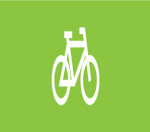
You can use advanced stopping places when you need to wait at an intersection. Take care if you need to pass a queue of traffic to reach an advanced stopping place.
Passing other people and vehicles
When you wait in an advanced stopping place instead of beside a queue, you are more visible to drivers. Because you start from the front of the queue, turning vehicles are less likely to cross your path.
Drivers of other vehicles must not stop or block advanced stopping places or the marked cycle lanes leading to them. This includes motorbike riders.
Advanced stop boxes are areas at the front of the traffic lanes at an intersection, marked with a bike symbol on a green background.
Advanced stop boxes sometimes have a marked cycle lane leading to them, or a row of painted diamonds to show where the bike detector is.
Several riders can fit in one advanced stop box. If possible, leave room for other riders and position yourself to suit the direction you want to go.
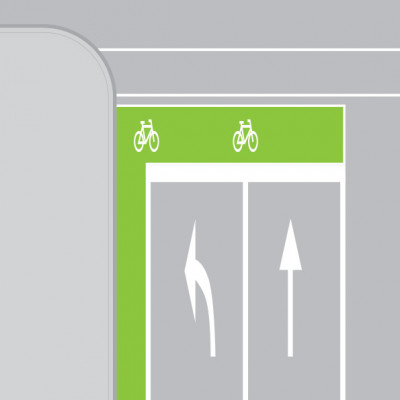
Advanced stop boxes
Advanced stop lines are stop lines where a cycle lane extends further than the general traffic lane next to it. This means riders stop further ahead than general traffic.
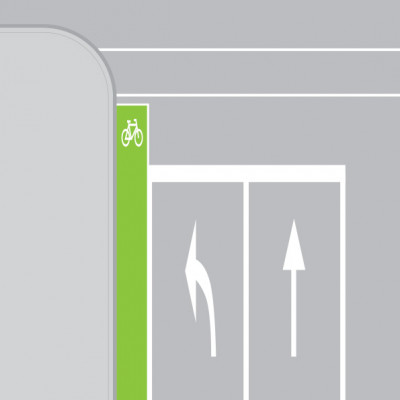
Advanced stop lines
Turning right at some intersections can be difficult. If you prefer, you can:
Hook turns mean that you can stay on the left side of the road at all times – you don’t need to move across traffic to turn right.
A hook turn at a crossroads with traffic lights takes four steps.
Steps in a hook turn:
Hook turns are most useful at crossroads with traffic lights. The basic idea of making a right turn in stages can also help you in other situations where you want to avoid moving across traffic.
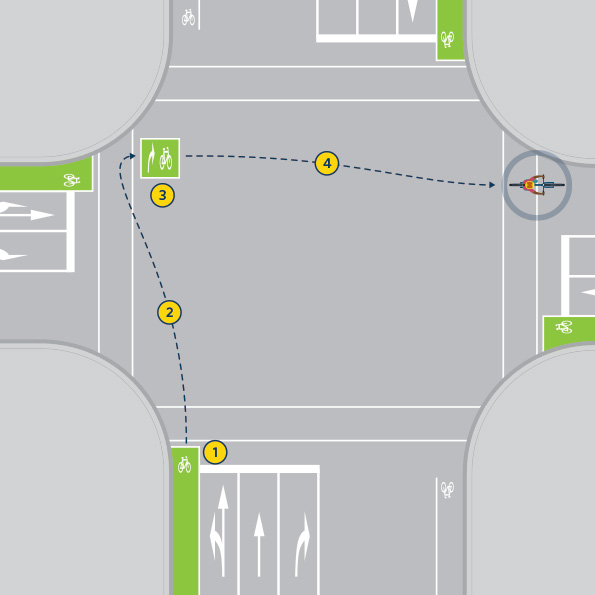
Doing a hook turn
Some intersections have markings and signs to help you do a hook turn.
Hook turn markings are a green box marked with a bike and a turning arrow. They show you a good place to stop and wait for the traffic lights to change – ahead of traffic in the direction you want to go and away from the traffic you started with.

Hook turn markings
Hook turn signs show a hook turn diagram. They recommend hook turns at a particular intersection.
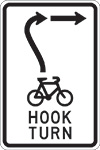
Hook turn sign
All intersections with traffic lights have vehicle detectors set in the road surface just before the intersection’s white stop lines. When a vehicle stops over the detector, a message tells the traffic light you are waiting. Sometimes bikes aren’t detected because they are smaller than other vehicles.
Stop your bike directly over the vehicle detector for the best chance of being
detected. Look for signs of the detector’s location – check for cut lines in the road, sometimes covered with tar. Stop your bike over any of the cut lines.
If you have been waiting for a while and your bike hasn’t been detected, pushing a pedestrian crossing button can trigger the traffic lights.
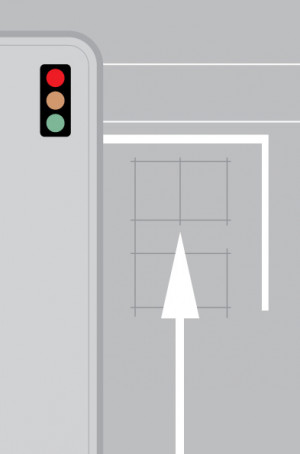
Traffic lights detector
Some advanced stopping places and crossing points are marked with a row of diamonds to show there’s a special detector for bikes. Stop your bike over the diamonds to trigger the traffic lights.
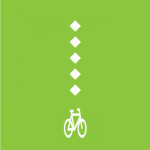
Bike detector symbol
Diamonds in a line indicate bike detectors.
Bike warning signs are active warning signs designed to warn approaching drivers that you are riding nearby. You may see bike warning signs at narrow bridges, on and off ramps, places where you ride across busy driveways and in other similar places.
Some bike warning signs activate automatically when you ride over a bike detector marked with diamonds. Others have a button to push. The lights are designed to stay on long enough for you to ride past the place where drivers may cross your path.
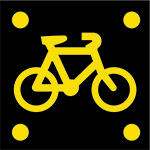
Bike warning sign